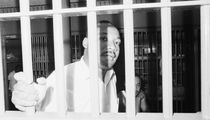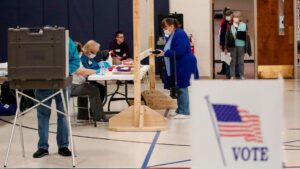Despite overwhelming public outcry, two new digital billboards will soon go along Highway 101 in San Jose, marking the first time the city has allowed such signs to be built in more than 36 years.
In a 9-2 vote, the San Jose City Council authorized Clear Channel Outdoor to build two large electronic billboards along Highway 101 just north of the Highway 87 interchange on Mineta San Jose International Airport property. Councilmembers Matt Mahan and Raul Peralez, who are both running for mayor, dissented.
The move comes nearly four years after the city council first moved to dismantle the citywide ban, which has been in place since 1985, and just weeks after the city’s airport commission overwhelmingly recommended the city drop the project and re-evaluate the 2018 policy that led to it.
Although the council acknowledged the considerable community opposition to billboards, they reasoned that the signs offered an opportunity to decrease blight.
Under the anticipated deal with Clear Channel, the company will take down 12 dilapidated, paper billboards in the city’s lower-income neighborhoods in exchange for the two new digital signs along the freeway.
“We heard from a lot of members of the public who are upset about this and they should be because no one wants billboards,” Mayor Sam Liccardo said during the meeting. “… But it’s a greater benefit to our public to see more billboards down than up — straightforward math.”
The vote marked a major blow to residents who have been fiercely rallying against the city adding any new digital signs.
“The reality is there are probably more than 500 signs in the city of San Jose and most of them will still be standing (after this,)” said San Jose resident Les Levitt, who helped launch a grassroots effort No Digital Billboards in San Jose. “Any councilmember who thinks this was a one-day event or an isolated agenda item related to these billboards is likely to be surprised that we did open the floodgates and there will be others to follow soon.”
A city survey last year reported that nearly 93% of San Jose residents opposed allowing new digital billboards to be built along the city’s freeways.
But that survey was conducted more than two years after the city had already begun the process to do just that.
After years of lobbying efforts from the billboard industry, the city council in 2018 voted to allow up to 22 new digital signs and billboards to be built on 17 city-owned sites. That plan included permitting the construction of new signs on a handful of city-owned downtown buildings such as the Hammer Theatre and the Center for Performing Arts and adding new digital billboards on up to eight freeway-facing public properties, including at the airport.
City leaders abandoned a separate proposal by the city last year to allow private property owners to build up to 75 billboards on freeway-facing sites along Highway 87, Interstate 280 and Interstate 880 after facing intense public scrutiny.
In addition to the two signs approved at the airport, another digital media company Outfront Media has submitted plans to the city to construct a billboard along Interstate 880 near the end of the San Jose Airport runway.
Although that sign has yet to go through the full approval process, it’s already raising eyebrows.
“It’s definitely right in the approach path, but I was told that it was not something that involved the airport,” said Dan Connolly, chair of the San Jose Airport Commission. “I find it ironic.”
Connolly, who is opposed to allowing new digital signs at the airport, said he was also concerned about “the Pandora box that’s being opened.”
“I see no way the city could win a lawsuit against a private individual if the city is using their land and making money off digital billboards and then prohibiting private landowners from doing the same thing,” he said.
During Tuesday’s council meeting, the council hammered out their desired contract terms for Clear Channel’s billboards at the airport in real-time.
Under the anticipated contract, Clear Channel is permitted to build two signs, each with two LED-illuminated faces measuring 1,000 square feet. The signs must be turned off from midnight until 6 a.m. each day.
In exchange for the signs, the city is asking Clear Channel to take down at least 12 dilapidated paper billboards primarily within the city’s lower-income neighborhoods, as well as two anywhere of their choosing within the state of California, as required as Caltrans. They’ve also requested that the signs run on 100% renewable energy and that the company replace each tree removed to construct a sign with five new trees to be planted in areas of the city that currently lack canopy coverage.
The airport will receive 10% of the billboard advertising time to promote the airport and expects the signs to generate an estimated annual revenue of $490,000 for the airport, according to airport director John Aiken.
The city did not solicit competitive bids for the project, citing a 2007 contract reached with Clear Channel for advertising opportunities at the airport. City officials vow that the contract, which expires in 2027, covers new billboards and outdoor signage, however, another billboard company, Outfront Media, has challenged that claim. Councilmember Peralez voted against the project because he wanted to see it go through new bidding.
“This project mitigates the concerns of stakeholders who care about safety, the environment, the night sky and who want billboards removed,” said Bob Schmitt, regional president for Clear Channel. “Not all billboards are alike. This is a good project.”



















